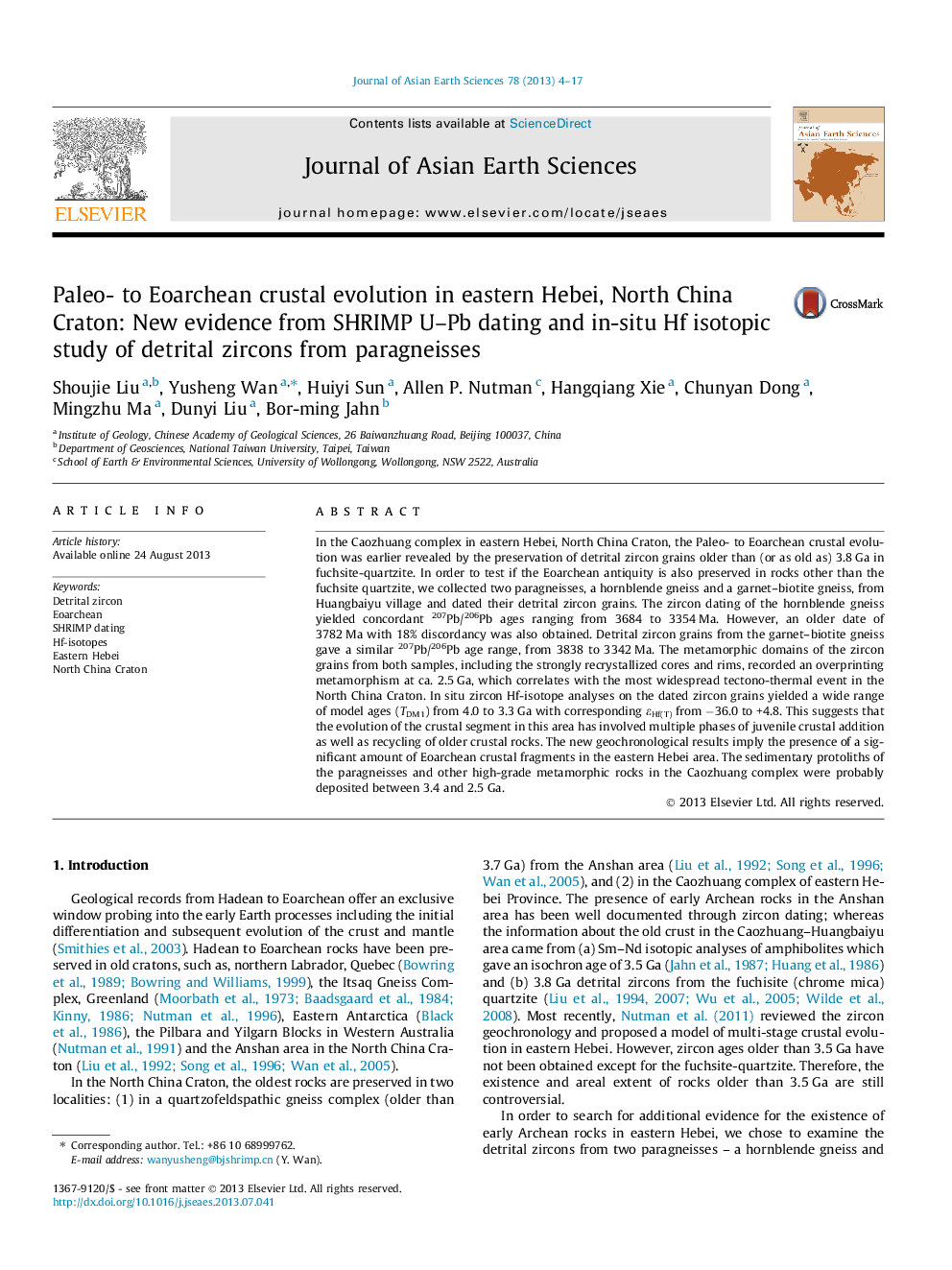| کد مقاله | کد نشریه | سال انتشار | مقاله انگلیسی | نسخه تمام متن |
|---|---|---|---|---|
| 4730832 | 1640389 | 2013 | 14 صفحه PDF | دانلود رایگان |

• Two new paragneisses containing detrital zircons as old as 3.8 Ga were reported.
• Multi-phased crustal addition and recycling from 3.8 to 3.4 Ga were identified.
• A nearly complete Archean crustal evolution was recorded in eastern Hebei.
In the Caozhuang complex in eastern Hebei, North China Craton, the Paleo- to Eoarchean crustal evolution was earlier revealed by the preservation of detrital zircon grains older than (or as old as) 3.8 Ga in fuchsite-quartzite. In order to test if the Eoarchean antiquity is also preserved in rocks other than the fuchsite quartzite, we collected two paragneisses, a hornblende gneiss and a garnet–biotite gneiss, from Huangbaiyu village and dated their detrital zircon grains. The zircon dating of the hornblende gneiss yielded concordant 207Pb/206Pb ages ranging from 3684 to 3354 Ma. However, an older date of 3782 Ma with 18% discordancy was also obtained. Detrital zircon grains from the garnet–biotite gneiss gave a similar 207Pb/206Pb age range, from 3838 to 3342 Ma. The metamorphic domains of the zircon grains from both samples, including the strongly recrystallized cores and rims, recorded an overprinting metamorphism at ca. 2.5 Ga, which correlates with the most widespread tectono-thermal event in the North China Craton. In situ zircon Hf-isotope analyses on the dated zircon grains yielded a wide range of model ages (TDM1) from 4.0 to 3.3 Ga with corresponding εHf(T) from −36.0 to +4.8. This suggests that the evolution of the crustal segment in this area has involved multiple phases of juvenile crustal addition as well as recycling of older crustal rocks. The new geochronological results imply the presence of a significant amount of Eoarchean crustal fragments in the eastern Hebei area. The sedimentary protoliths of the paragneisses and other high-grade metamorphic rocks in the Caozhuang complex were probably deposited between 3.4 and 2.5 Ga.
Figure optionsDownload as PowerPoint slide
Journal: Journal of Asian Earth Sciences - Volume 78, 15 December 2013, Pages 4–17